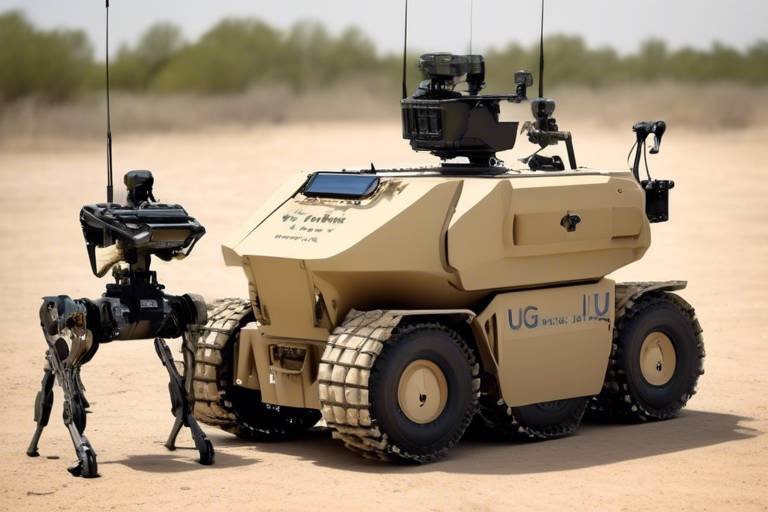The Role of the MAV (Micro Aerial Vehicle) in Reconnaissance
Micro Aerial Vehicles (MAVs) have emerged as groundbreaking tools in the realm of reconnaissance, revolutionizing how we gather intelligence and monitor environments. These small, unmanned aircraft are designed to perform a variety of tasks, from military surveillance to environmental monitoring. Unlike traditional aerial vehicles, MAVs are lightweight, highly maneuverable, and can be deployed in a fraction of the time. They are equipped with advanced technologies that enable them to capture high-resolution imagery, gather data, and transmit information in real-time.
MAVs are not just miniature drones; they are sophisticated systems built for efficiency and effectiveness. Their design often incorporates cutting-edge materials and technologies, allowing them to operate in challenging conditions while maintaining a low profile. With their compact size, MAVs can navigate through tight spaces and access areas that larger aircraft cannot reach. This flexibility makes them invaluable in various scenarios, especially where traditional reconnaissance methods fall short.
In military contexts, MAVs serve as vital assets, providing real-time intelligence that can significantly impact the outcome of operations. They enhance situational awareness for ground troops, allowing commanders to make informed decisions quickly. The ability to deploy MAVs in combat scenarios means that military forces can gather crucial information without exposing personnel to unnecessary risks. Imagine being able to monitor enemy movements from a safe distance, all thanks to the capabilities of these remarkable machines.
The surveillance capabilities of MAVs are nothing short of impressive. Equipped with high-resolution cameras and various sensors, they can monitor enemy movements with incredible detail. For instance, a MAV can fly over a battlefield and capture live footage, which is then analyzed to provide insights into troop deployments and strategic positions. This level of detail is essential for planning effective military operations, as it allows for a comprehensive understanding of the battlefield environment.
One of the most critical features of MAVs is their ability to transmit data in real-time. This capability is vital for military operations where timing is everything. When a MAV captures crucial information, it relays that data back to command centers almost instantaneously. This rapid transmission allows military leaders to assess situations and make strategic decisions on the fly. In high-stakes scenarios, where every second counts, this advantage can be the difference between success and failure.
Stealth is a fundamental design principle for MAVs, aimed at minimizing detection by enemy forces. These vehicles often employ advanced technologies that reduce their radar signatures and noise levels, making them difficult to spot. Techniques such as low-altitude flying and terrain masking further enhance their evasion capabilities. This stealth factor is crucial for covert reconnaissance missions, allowing military personnel to gather intelligence without alerting adversaries.
MAVs offer several significant advantages over traditional reconnaissance methods, which often involve larger aircraft or ground units. Here are some key benefits:
- Cost-Effectiveness: MAVs are generally less expensive to operate than traditional aircraft, making them accessible for various operations.
- Versatility: They can be used in a multitude of scenarios, from military to civilian applications.
- Rapid Deployment: MAVs can be launched quickly, allowing for immediate reconnaissance when needed.
These advantages contribute to the growing popularity of MAVs in military applications, as they provide a level of efficiency and effectiveness that traditional methods often lack.
Beyond military use, MAVs are making waves in civilian sectors, proving their versatility and effectiveness in various applications. They are increasingly utilized in disaster response, environmental monitoring, and urban planning. For instance, during natural disasters, MAVs can provide critical aerial assessments, helping teams locate survivors and assess damage in real-time. This capability is invaluable in situations where time is of the essence and traditional methods may be hindered by obstacles.
In the aftermath of a disaster, every second counts. MAVs can quickly survey affected areas, providing crucial information about the situation on the ground. They can locate survivors trapped in debris, assess structural damage, and even deliver supplies to hard-to-reach locations. The agility and speed of MAVs make them indispensable tools for emergency responders, enabling them to act swiftly and effectively.
MAVs are also instrumental in environmental monitoring, allowing researchers to gather data in remote areas that are otherwise difficult to access. They can be used for wildlife tracking, pollution assessment, and climate research. For example, a MAV can fly over a forest to monitor wildlife populations or assess the impact of pollution in a river. This capability not only aids in scientific research but also supports conservation efforts, allowing for more informed decision-making.
Q1: What are the main advantages of using MAVs for reconnaissance?
A1: MAVs offer cost-effectiveness, versatility, rapid deployment, and enhanced surveillance capabilities compared to traditional methods.
Q2: How do MAVs transmit data in real-time?
A2: MAVs are equipped with communication systems that allow them to send captured data back to command centers almost instantaneously.
Q3: Can MAVs be used in civilian applications?
A3: Yes, MAVs are increasingly used in civilian sectors for disaster response, environmental monitoring, and urban planning.
Q4: What makes MAVs stealthy?
A4: MAVs utilize advanced technologies to reduce their radar signatures and noise levels, allowing them to operate without detection.

[Introduction to MAVs]
Micro Aerial Vehicles, commonly known as MAVs, represent a groundbreaking advancement in the realm of unmanned aerial technology. These small, versatile aircraft are designed for a variety of tasks, primarily focused on reconnaissance and surveillance. Unlike traditional aerial vehicles, which can be large and cumbersome, MAVs are compact, lightweight, and often equipped with sophisticated sensors and cameras that enable them to perform their missions with remarkable efficiency.
One of the most significant advantages of MAVs lies in their design. Typically weighing less than 5 kilograms, they can be easily deployed in diverse environments, from urban landscapes to rugged terrains. Their small size allows them to navigate through tight spaces and access areas that larger drones or manned aircraft simply cannot reach. This makes them particularly valuable in situations where stealth and agility are crucial.
In terms of functionalities, MAVs are equipped with advanced technology that enhances their operational capabilities. They often feature:
- High-resolution cameras for capturing detailed imagery.
- Infrared sensors that allow for night vision and thermal imaging.
- GPS and navigation systems for precise positioning and autonomous flight.
This advanced technology not only sets MAVs apart from their larger counterparts but also makes them invaluable in various fields. For instance, in military operations, MAVs can provide real-time intelligence without putting personnel at risk. In civilian applications, they can aid in disaster response and environmental monitoring, showcasing their versatility and adaptability.
As we delve deeper into the role of MAVs in reconnaissance, it becomes clear that their unique design and capabilities are revolutionizing the way we approach aerial surveillance. The future of MAVs looks promising, with ongoing advancements in technology that will only enhance their effectiveness and expand their applications. Whether it's for military operations, disaster relief, or environmental assessments, MAVs are poised to play a pivotal role in shaping the future of reconnaissance.
- What are Micro Aerial Vehicles (MAVs)?
MAVs are small, unmanned aircraft designed for a variety of tasks, particularly reconnaissance and surveillance. - What advantages do MAVs have over traditional aerial vehicles?
MAVs are more compact, cost-effective, and versatile, making them suitable for a range of applications. - How are MAVs used in military operations?
MAVs provide real-time intelligence and surveillance, enhancing situational awareness for ground troops. - Can MAVs be used in civilian applications?
Yes, MAVs are increasingly used in disaster response, environmental monitoring, and urban planning.
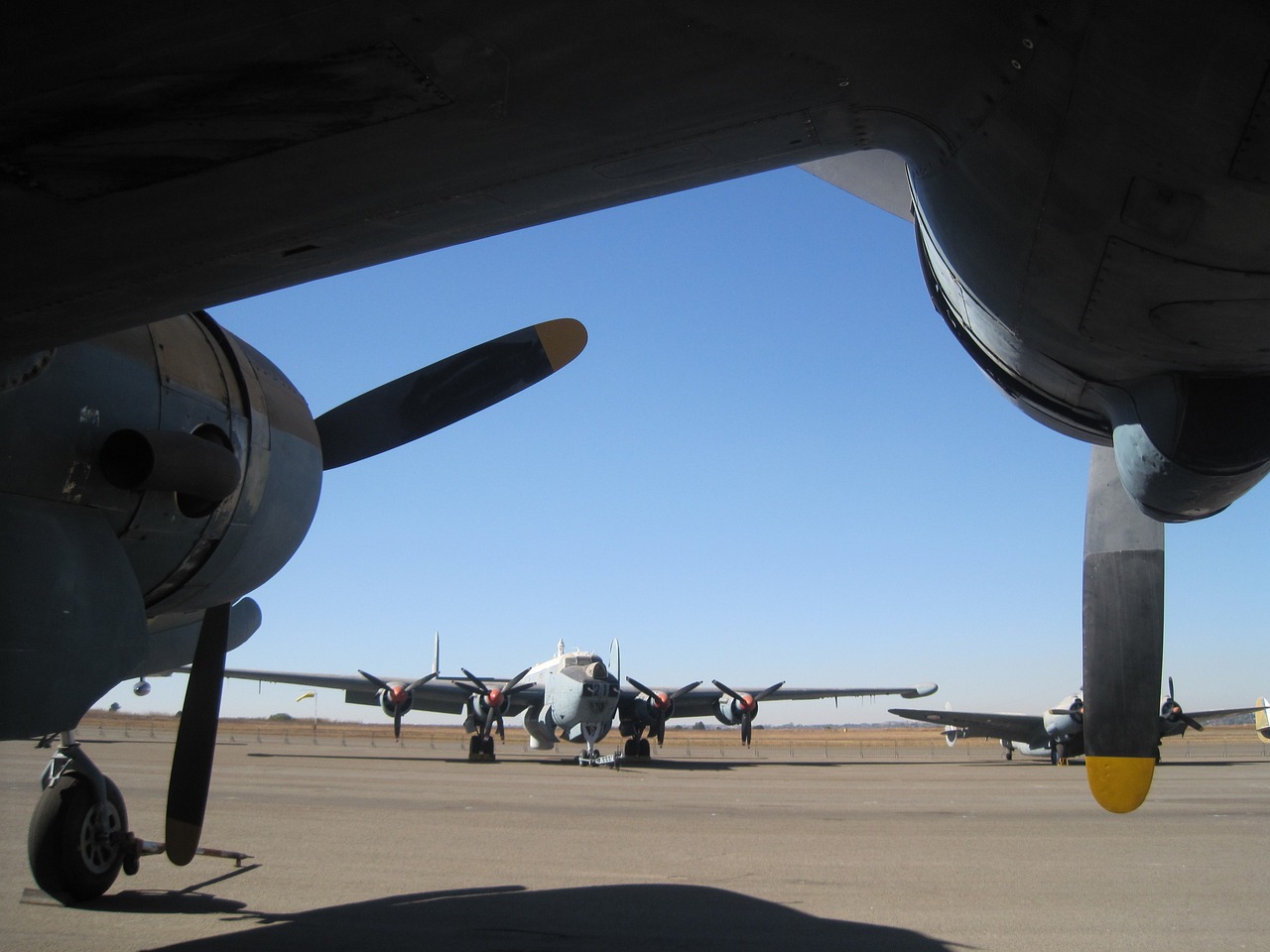
[Applications in Military Reconnaissance]
Micro Aerial Vehicles (MAVs) have become indispensable tools in military reconnaissance, transforming how armed forces gather intelligence and conduct operations. These small, unmanned aircraft are not just gadgets; they are sophisticated systems that provide real-time data, enabling commanders to make informed decisions swiftly. Imagine being able to see what's happening on the battlefield without putting troops in harm's way—this is the reality that MAVs bring to the table.
One of the primary applications of MAVs in military settings is their ability to conduct surveillance missions. Equipped with high-resolution cameras and advanced sensors, these vehicles can capture detailed images and videos of enemy positions, troop movements, and supply routes. This capability allows for a level of situational awareness that was previously unattainable. For instance, during reconnaissance missions, MAVs can fly over hostile territories, providing ground troops with critical information while remaining undetected.
The surveillance capabilities of MAVs are truly remarkable. With the integration of cutting-edge technologies, these aerial vehicles can monitor vast areas with precision. They often utilize electro-optical and infrared sensors that can detect heat signatures and movement, making them effective even in low visibility conditions. This means that whether it's day or night, MAVs can provide continuous surveillance, ensuring that military personnel have access to the most current information available.
Another significant advantage of MAVs is their ability to transmit data in real-time. This feature is vital for military operations, as it allows for immediate analysis and decision-making. When a MAV captures critical footage or data, it can relay this information back to command centers almost instantaneously. This capability not only enhances situational awareness but also improves response times during critical operations. Imagine a scenario where troops need to make a split-second decision; having real-time data at their fingertips can be the difference between success and failure.
Stealth is a fundamental aspect of military operations, and MAVs are designed with this in mind. Their small size and advanced design reduce their radar signature, making them difficult to detect by enemy forces. This stealth capability is crucial for covert reconnaissance missions, where the element of surprise can be a game-changer. By employing various evasion techniques, such as flying at low altitudes and utilizing terrain masking, MAVs can navigate through hostile environments without drawing attention.
Moreover, the versatility of MAVs allows them to be deployed in various military scenarios. From combat support to intelligence gathering, these aerial vehicles can adapt to different mission requirements. They can be equipped with various payloads, including communication relays and electronic warfare systems, further enhancing their operational capabilities. As military technology continues to evolve, the role of MAVs in reconnaissance is expected to expand, making them an essential asset for modern armed forces.
In conclusion, the applications of Micro Aerial Vehicles in military reconnaissance are profound and multifaceted. They enhance surveillance capabilities, provide real-time data transmission, and incorporate stealth techniques, all of which contribute to improved military operations. As these technologies advance, we can only anticipate even greater innovations that will further revolutionize how reconnaissance is conducted on the battlefield.
- What are MAVs? MAVs, or Micro Aerial Vehicles, are small, unmanned aircraft designed for various applications, including military reconnaissance.
- How do MAVs enhance military operations? They provide real-time intelligence, improve situational awareness, and allow for covert surveillance without risking personnel.
- What technologies do MAVs use for surveillance? MAVs are equipped with high-resolution cameras, infrared sensors, and advanced data transmission systems.
- Can MAVs operate in adverse weather conditions? Yes, many MAVs are designed to withstand various weather conditions, ensuring reliable performance during missions.
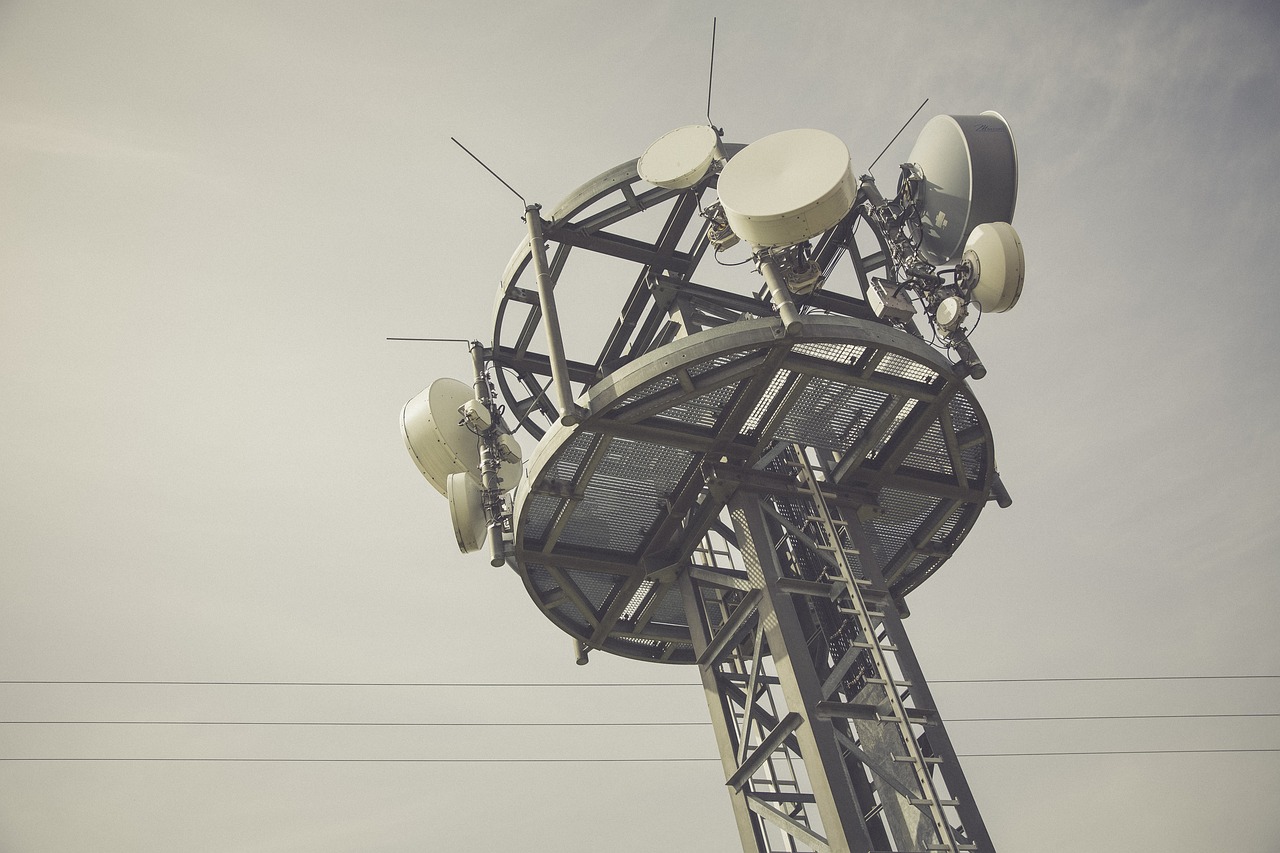
[Surveillance Capabilities]
When it comes to reconnaissance, the surveillance capabilities of Micro Aerial Vehicles (MAVs) are nothing short of revolutionary. Imagine having a bird's-eye view of a battlefield or disaster zone, all while remaining safely out of harm's way. MAVs are equipped with cutting-edge technologies that enable them to gather detailed information about their surroundings, providing invaluable insights that can turn the tide of a mission.
One of the standout features of MAVs is their ability to carry high-resolution cameras and a variety of sensors. These advanced tools allow for crystal-clear imaging and data collection, which is crucial for effective reconnaissance. For instance, a MAV can capture images from altitudes that traditional ground-based surveillance methods simply cannot reach. This capability is particularly vital in military operations, where understanding enemy movements and positions can be the difference between success and failure.
In addition to visual data, MAVs can also be equipped with thermal imaging sensors and infrared cameras. These technologies enable them to detect heat signatures, making it possible to locate personnel or equipment even in complete darkness or through dense foliage. This feature is particularly useful in search and rescue missions, where every second counts. Furthermore, the integration of LiDAR (Light Detection and Ranging) systems allows MAVs to create detailed 3D maps of their environment, providing situational awareness that is unparalleled.
Data collection is just one part of the equation; how that data is transmitted back to operators is equally important. MAVs utilize real-time data transmission technologies, which means that information gathered during a flight can be relayed instantaneously to command centers. This capability ensures that commanders have access to the most current information, allowing for timely and informed decision-making. Imagine being able to see enemy troop movements as they happen, or receiving live updates on a disaster's impact—this is the power of MAV surveillance.
Moreover, the stealth features of MAVs enhance their surveillance capabilities. Many MAVs are designed to operate at low altitudes and are built with materials that minimize radar cross-section, making them difficult to detect. This stealthiness is crucial in military operations where being unseen can significantly increase the effectiveness of reconnaissance missions. The ability to gather intelligence without alerting the enemy allows for more strategic planning and execution of operations.
In summary, the surveillance capabilities of MAVs represent a significant leap forward in reconnaissance technology. With their advanced imaging systems, real-time data transmission, and stealth features, MAVs are not just tools; they are game-changers in the field of intelligence gathering. As technology continues to evolve, the potential applications for MAVs in surveillance will only expand, opening new avenues for their use in both military and civilian contexts.
- What are Micro Aerial Vehicles (MAVs)?
MAVs are small, unmanned aircraft designed for various applications, including reconnaissance, surveillance, and data collection. - How do MAVs transmit data?
MAVs use real-time data transmission technologies to relay information back to command centers, ensuring timely decision-making. - What technologies are used in MAV surveillance?
MAVs are equipped with high-resolution cameras, thermal imaging sensors, and LiDAR systems for detailed environmental mapping. - Why are MAVs preferred over traditional surveillance methods?
MAVs offer advantages such as cost-effectiveness, versatility, and the ability to operate in environments that are difficult for manned aircraft or ground units.

[Real-time Data Transmission]
In the fast-paced world of military operations, real-time data transmission has emerged as a game-changer, dramatically enhancing decision-making processes. Imagine a battlefield where every second counts; the ability to receive and analyze data instantly can mean the difference between success and failure. Micro Aerial Vehicles (MAVs) are at the forefront of this technological revolution, equipped with advanced communication systems that ensure seamless transmission of critical information.
MAVs utilize a variety of technologies to transmit data back to command centers. These include high-frequency radio signals, satellite communication, and secure data links. By employing these methods, they can send live video feeds, sensor data, and even telemetry information that helps ground troops and commanders make informed decisions on the fly. For instance, when an MAV captures high-resolution images of enemy positions, that data can be relayed in real-time, allowing for immediate tactical adjustments.
One of the standout features of MAVs is their ability to operate in environments where traditional communication methods might fail. Whether navigating through dense urban areas or rugged terrains, MAVs maintain connectivity through mesh networking, which allows them to communicate with each other and relay information even in challenging conditions. This capability not only enhances situational awareness but also ensures that troops have access to the most current data available.
Furthermore, the integration of Artificial Intelligence (AI) into MAVs has taken real-time data processing to the next level. AI algorithms can analyze data as it is being transmitted, identifying patterns and anomalies that might otherwise go unnoticed. This predictive capability allows military leaders to anticipate enemy movements and adjust their strategies accordingly. In essence, MAVs equipped with AI can act as autonomous scouts, providing insights that enhance operational effectiveness.
To illustrate the impact of real-time data transmission, let's take a look at the following table summarizing the key benefits:
| Benefit | Description |
|---|---|
| Instantaneous Updates | MAVs provide live data feeds that allow for immediate tactical adjustments. |
| Enhanced Situational Awareness | Real-time information helps commanders understand the battlefield dynamics better. |
| AI-Driven Insights | Data analysis in real-time offers predictive capabilities for strategic planning. |
| Robust Communication | Mesh networking ensures consistent connectivity in diverse environments. |
In conclusion, the ability of MAVs to transmit data in real-time is not just a technical feature; it's a fundamental aspect of modern military strategy. As technology continues to advance, we can expect even more sophisticated systems that will further enhance the effectiveness of MAVs in reconnaissance operations. The future of warfare is undoubtedly leaning towards an era where speed and accuracy are paramount, and MAVs are leading the charge.
- What are Micro Aerial Vehicles (MAVs)? - MAVs are small, unmanned aircraft designed for various applications, including reconnaissance, surveillance, and data collection.
- How do MAVs transmit data? - They utilize advanced communication technologies such as high-frequency radio signals, satellite communication, and secure data links.
- What role does AI play in MAVs? - AI enhances the data analysis capabilities of MAVs, allowing for predictive insights and better decision-making on the battlefield.
- Why is real-time data transmission important? - It allows military leaders to make informed decisions quickly, improving response times and operational effectiveness.
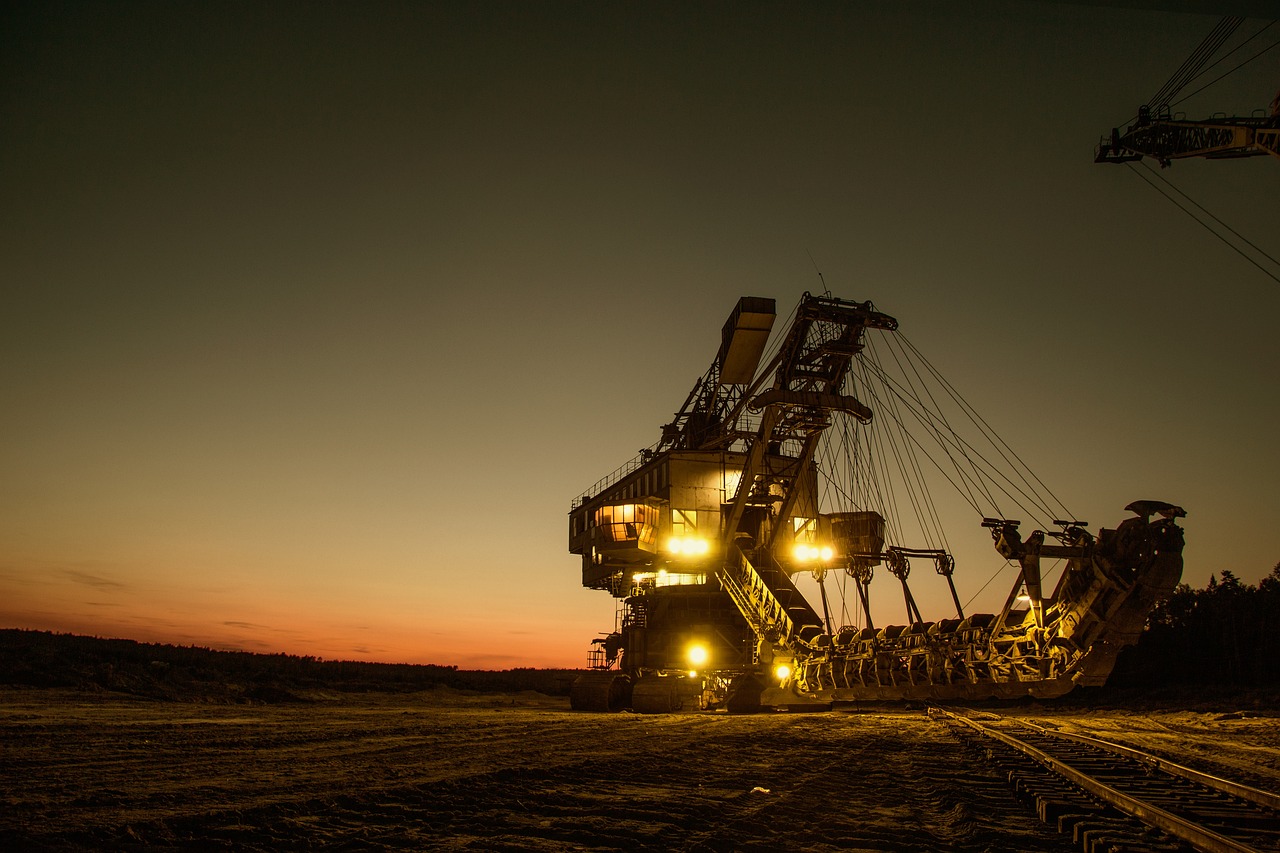
[Stealth and Evasion Techniques]
In the realm of reconnaissance, stealth and evasion are not just advantageous; they are essential. Micro Aerial Vehicles (MAVs) are engineered with a suite of sophisticated techniques that allow them to operate under the radar, minimizing the risk of detection by enemy forces. Imagine a stealthy ninja, moving silently through the shadows—this is the essence of how MAVs function in hostile environments. Their design incorporates several features that enhance their ability to evade enemy surveillance and countermeasures.
One of the primary techniques employed in MAV design is low observable technology. This involves using materials and shapes that reduce radar cross-section, making it difficult for traditional radar systems to detect them. MAVs often feature special coatings that absorb radar waves instead of reflecting them, akin to how a sponge absorbs water. This advanced technology allows them to glide through enemy territory unnoticed, gathering crucial intelligence without raising alarms.
Another critical aspect of MAV stealth is their flight profile. Unlike larger drones that typically fly at high altitudes, MAVs can operate at lower altitudes, navigating through obstacles and terrain that would otherwise be detectable from the air. This capability is akin to a bird flying just above the treetops, utilizing the natural cover of the environment to remain hidden. Additionally, many MAVs are equipped with noise reduction systems that minimize the sound of their rotors or engines, further enhancing their stealth capabilities.
Furthermore, MAVs utilize advanced navigation systems that allow for precise control and maneuverability. These systems can incorporate GPS, inertial navigation, and even visual odometry to ensure that MAVs can navigate complex environments silently. The integration of these technologies enables MAVs to perform covert operations, such as surveillance and reconnaissance, without drawing attention to their presence.
In terms of evasion techniques, MAVs are often programmed with sophisticated flight algorithms that allow them to react to potential threats in real-time. For instance, if an enemy radar system detects an MAV, the vehicle can automatically alter its flight path to avoid capture. This capability is similar to a skilled dancer who can change their moves based on the music's rhythm, ensuring they remain graceful and undetected.
To summarize, the stealth and evasion techniques employed by MAVs are a combination of cutting-edge technology and innovative design. With their low observable technology, optimized flight profiles, and advanced navigation systems, these micro aerial vehicles are not only effective in gathering intelligence but also excel at avoiding detection. As technology continues to advance, we can only expect these capabilities to improve, making MAVs an even more formidable asset in reconnaissance operations.
- What are MAVs? Micro Aerial Vehicles are small, unmanned aircraft designed for various applications, including reconnaissance, surveillance, and data collection.
- How do MAVs achieve stealth? MAVs achieve stealth through low observable technology, optimized flight profiles, and noise reduction systems that minimize detection by enemy forces.
- What are some civilian applications of MAVs? MAVs are used in disaster response, environmental monitoring, and urban planning, showcasing their versatility beyond military applications.
- Can MAVs transmit real-time data? Yes, MAVs are equipped with real-time data transmission systems that relay crucial information back to command centers, enhancing decision-making processes.
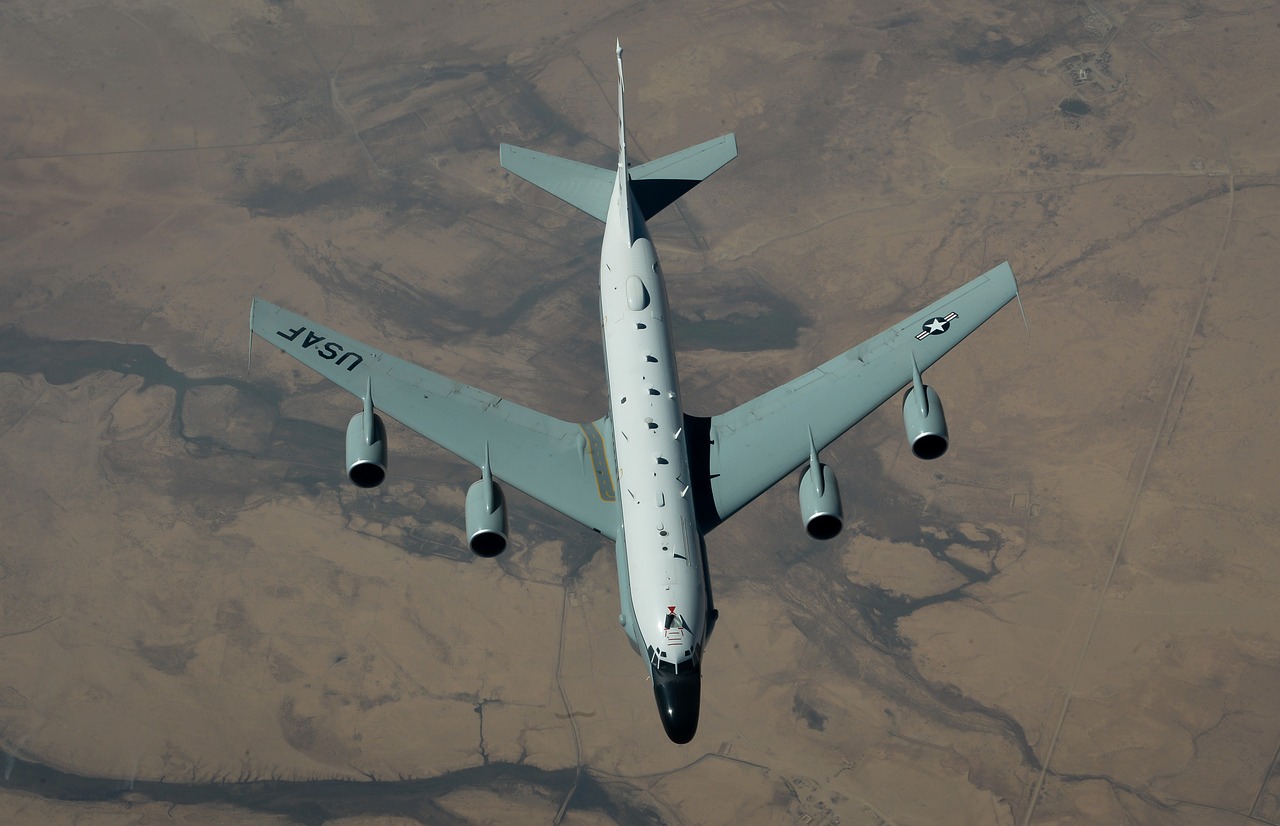
[Advantages Over Traditional Methods]
Micro Aerial Vehicles (MAVs) have transformed the landscape of reconnaissance, offering a plethora of advantages that traditional methods simply cannot match. One of the most significant benefits is their cost-effectiveness. Unlike manned aircraft or ground reconnaissance teams, MAVs require less operational expenditure. They can be deployed quickly and efficiently, often at a fraction of the cost of traditional methods. This allows organizations to allocate resources more effectively, especially in military operations where budgets can be tight.
Furthermore, MAVs are incredibly versatile. They can be equipped with various sensors and cameras, allowing them to adapt to different missions and environments. Whether it’s capturing high-resolution imagery, thermal imaging, or even conducting environmental assessments, MAVs can do it all. This adaptability is a game-changer, enabling operators to switch between different reconnaissance tasks without the need for extensive reconfiguration or new equipment.
Another major advantage is their ease of deployment. Traditional reconnaissance methods often involve extensive planning, logistics, and personnel. In contrast, MAVs can be launched almost anywhere, anytime, and by a minimal crew. This rapid deployment capability is crucial in situations where time is of the essence, such as during natural disasters or military operations where every second counts.
Moreover, the stealth capabilities of MAVs cannot be overlooked. Their small size and advanced design allow them to fly under the radar, literally and figuratively. This stealthiness is particularly beneficial in military applications, where remaining undetected is vital. Unlike larger aircraft, which can be easily spotted, MAVs can gather intelligence without alerting the enemy, making them indispensable for covert operations.
Additionally, MAVs provide an enhanced level of safety for personnel. In high-risk environments, deploying a MAV reduces the need for human presence in potentially dangerous areas. This not only protects lives but also allows for more comprehensive reconnaissance without the fear of losing valuable human resources. In many cases, the data collected by MAVs can inform ground troops and decision-makers, allowing them to make strategic choices without putting anyone in harm's way.
In terms of data collection, MAVs excel at real-time information gathering. The ability to transmit data instantaneously back to command centers means that decisions can be made based on the most current information available. This real-time capability is crucial in dynamic environments where situations can change rapidly. For instance, in military scenarios, being able to adapt to new intelligence on enemy movements can turn the tide of a mission.
Lastly, the environmental impact of using MAVs is considerably lower than that of traditional methods. Many conventional reconnaissance techniques involve heavy machinery and vehicles that contribute to pollution and habitat destruction. MAVs, being smaller and more efficient, have a reduced carbon footprint, making them a more sustainable choice for reconnaissance operations.
In summary, the advantages of Micro Aerial Vehicles over traditional methods are clear and compelling. Their cost-effectiveness, versatility, ease of deployment, stealth capabilities, enhanced safety, real-time data transmission, and reduced environmental impact make them a superior choice for reconnaissance in various fields. As technology continues to advance, the role of MAVs is only expected to grow, solidifying their place as essential tools in modern reconnaissance.
- What are Micro Aerial Vehicles (MAVs)? MAVs are small, unmanned aircraft designed for various reconnaissance tasks, offering a range of functionalities that traditional methods cannot match.
- How do MAVs improve military operations? They provide real-time intelligence, enhance situational awareness, and can be deployed in high-risk areas without putting personnel in danger.
- Are MAVs used in civilian applications? Yes, MAVs are increasingly used in disaster response, environmental monitoring, and urban planning, showcasing their versatility beyond military use.
- What makes MAVs more cost-effective? Their lower operational costs, quick deployment capabilities, and reduced need for extensive logistics make them a more economical choice for reconnaissance.

[Civilian Applications]
Micro Aerial Vehicles (MAVs) have carved out a significant niche in civilian applications, proving that their utility extends far beyond the battlefield. As we delve into the various sectors where these innovative machines are making waves, it becomes evident that their versatility is nothing short of remarkable. Imagine a world where aerial surveillance can be conducted without the need for manned aircraft, where data can be collected in the most remote locations, and where disaster response can be executed with pinpoint accuracy. MAVs are making this vision a reality.
One of the standout areas where MAVs shine is in disaster response. When calamity strikes—be it an earthquake, flood, or wildfire—time is of the essence. MAVs can be deployed rapidly to assess damage, locate survivors, and even deliver essential supplies to areas that are otherwise unreachable. For instance, during natural disasters, traditional aerial vehicles may face challenges due to debris or hazardous conditions. In contrast, MAVs can navigate through tight spaces and provide real-time data to emergency responders, ensuring that help reaches those in need as quickly as possible.
In addition to disaster response, MAVs are increasingly utilized for environmental monitoring. They are equipped with advanced sensors that allow them to gather data on air and water quality, track wildlife, and even monitor changes in vegetation. This capability is invaluable for researchers and conservationists who require accurate and timely information to make informed decisions. For example, wildlife tracking through MAVs can minimize human interference in sensitive habitats while providing data on animal movements and behaviors.
To illustrate the diverse applications of MAVs in civilian life, consider the following table that outlines some key areas:
| Application Area | Key Benefits |
|---|---|
| Disaster Response | Rapid assessment, survivor location, supply delivery |
| Environmental Monitoring | Data collection in remote areas, wildlife tracking, pollution assessment |
| Urban Planning | Mapping, infrastructure inspection, traffic analysis |
Furthermore, MAVs are gaining traction in urban planning. City planners can use these aerial devices to create detailed maps, inspect infrastructure, and analyze traffic patterns. By providing a bird's-eye view, MAVs enable planners to make data-driven decisions that can enhance city livability and sustainability. Imagine being able to visualize traffic congestion from above and implementing solutions before issues escalate!
In summary, the civilian applications of Micro Aerial Vehicles are as varied as they are impactful. From aiding in disaster recovery to monitoring our environment and assisting in urban development, MAVs are reshaping how we approach challenges in our daily lives. Their ability to deliver real-time information and operate in challenging conditions makes them indispensable tools for both government agencies and private organizations.
- What are Micro Aerial Vehicles (MAVs)?
MAVs are small, unmanned aircraft designed for various applications, including reconnaissance, surveillance, and data collection. - How are MAVs used in disaster response?
MAVs can quickly assess damage, locate survivors, and deliver supplies to areas that are hard to reach, significantly improving response times. - Can MAVs monitor environmental changes?
Yes, MAVs are equipped with sensors that allow them to collect data on air and water quality, track wildlife, and monitor vegetation changes. - What advantages do MAVs have over traditional aircraft?
MAVs are generally more cost-effective, easier to deploy, and can operate in environments where traditional aircraft may struggle.

[Disaster Response]
When disaster strikes, be it a natural calamity like an earthquake or a man-made crisis, the first responders often face a chaotic environment filled with uncertainty. This is where Micro Aerial Vehicles (MAVs) truly shine, acting as the eyes in the sky and providing invaluable support. Imagine having a bird's-eye view of a disaster zone, enabling rescue teams to assess the situation quickly and accurately. MAVs are compact, agile, and equipped with advanced technology, making them ideal for navigating through challenging terrains that are often inaccessible to traditional vehicles.
MAVs can perform a variety of critical functions during disaster response operations. Their ability to fly at low altitudes and hover in place allows them to capture high-resolution images and videos, providing real-time data that can inform decision-making. For instance, they can identify blocked roads, locate survivors trapped under debris, and assess the extent of damage to infrastructure. This level of detailed information is crucial, as it helps rescue teams prioritize their efforts and allocate resources effectively.
One of the most significant advantages of using MAVs in disaster response is their rapid deployment capability. Unlike traditional aerial vehicles that may require extensive setup and planning, MAVs can be quickly launched and operational within minutes. This agility is vital in emergencies where every second counts. Moreover, MAVs can be equipped with various payloads, such as thermal imaging cameras or even small delivery systems for medical supplies, enhancing their utility in search and rescue missions.
Furthermore, the data collected by MAVs can be processed and analyzed in real-time, allowing for immediate insights that can guide rescue operations. For example, if a MAV detects heat signatures from a specific area, rescue teams can be directed there promptly, increasing the chances of saving lives. This capability not only enhances situational awareness but also fosters better coordination among different agencies involved in disaster response.
In addition to immediate rescue operations, MAVs also play a crucial role in long-term recovery efforts. After the initial response phase, these vehicles can be used to monitor the affected areas over time, documenting changes and helping assess the effectiveness of recovery initiatives. This ongoing surveillance can provide critical data for urban planners and policymakers to make informed decisions about rebuilding efforts and resource allocation.
Overall, the integration of MAVs into disaster response strategies represents a significant leap forward in how we approach emergencies. Their versatility, rapid deployment, and ability to gather real-time data make them indispensable tools in saving lives and facilitating recovery. As technology continues to evolve, we can expect even more innovative applications of MAVs in disaster scenarios, further enhancing their effectiveness and impact.
- What are the main advantages of using MAVs in disaster response? MAVs provide rapid deployment, real-time data collection, and the ability to access hard-to-reach areas, making them invaluable in emergencies.
- How do MAVs help locate survivors in disaster situations? Equipped with high-resolution cameras and thermal imaging, MAVs can identify heat signatures and provide visual assessments of disaster zones.
- Can MAVs deliver supplies during a disaster? Yes, some MAVs are designed with small payload capabilities to deliver medical supplies and essential items to areas that are difficult to access.
- How does real-time data from MAVs improve disaster response? Real-time data helps responders make informed decisions quickly, allowing them to prioritize rescue efforts and allocate resources effectively.
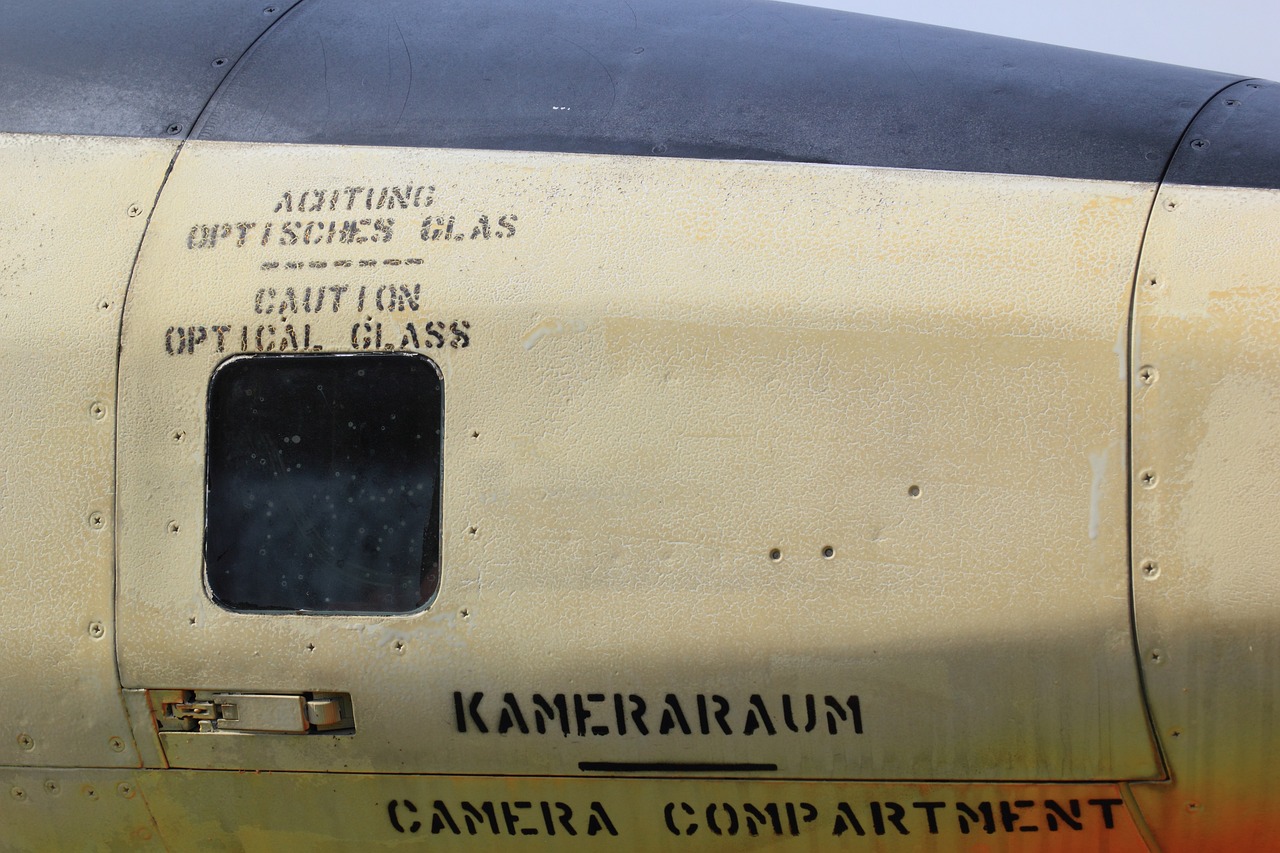
[Environmental Monitoring]
Micro Aerial Vehicles (MAVs) have emerged as game-changers in the realm of environmental monitoring. These nimble, small unmanned aircraft are not just toys for tech enthusiasts; they are equipped with advanced technologies that allow them to collect crucial data from areas that are often inaccessible or hazardous for human researchers. Imagine being able to soar over a dense forest or a polluted river, gathering information that can help us understand and protect our planet. That’s the power of MAVs!
One of the most significant advantages of using MAVs in environmental monitoring is their ability to cover large areas quickly and efficiently. Traditional methods, such as ground surveys, can be time-consuming and labor-intensive. In contrast, MAVs can fly over vast landscapes in a fraction of the time, capturing high-resolution images and data that can be analyzed to assess environmental health. For instance, they can be deployed to monitor wildlife populations, track migration patterns, and even assess the impact of climate change on various ecosystems.
Furthermore, MAVs are equipped with an array of sensors that can measure a variety of environmental factors. These include:
- Temperature - Monitoring temperature variations can provide insights into climate changes.
- Humidity - Understanding humidity levels is essential for studying plant and animal life.
- Air Quality - MAVs can detect pollutants and help assess air quality in urban areas.
- Soil Composition - By collecting samples from hard-to-reach areas, MAVs can aid in soil analysis.
In addition to these capabilities, MAVs can also be used for pollution assessment. They can fly over industrial areas or bodies of water to detect and monitor pollutants, providing real-time data that can inform regulatory actions and conservation efforts. For example, if a factory is leaking hazardous materials into a river, a MAV can quickly gather data that helps authorities respond before the situation worsens.
Moreover, the integration of geographic information systems (GIS) with MAV data allows for sophisticated mapping and analysis. This means researchers can visualize changes over time, making it easier to identify trends and develop strategies for conservation. Imagine having the ability to create a detailed map showing how a forest has changed over the years due to deforestation or climate change. This capability enhances our understanding of environmental issues and supports better decision-making.
In summary, the role of MAVs in environmental monitoring is not just a passing trend; it is a vital component of modern conservation efforts. As technology continues to evolve, the potential for MAVs to contribute to our understanding of the environment will only grow. They are becoming indispensable tools for researchers, conservationists, and policymakers alike, helping us to protect and preserve our planet for future generations.
- What are MAVs?
MAVs, or Micro Aerial Vehicles, are small, unmanned aircraft designed for various applications, including reconnaissance and environmental monitoring. - How do MAVs collect environmental data?
MAVs are equipped with advanced sensors and cameras that allow them to gather data on temperature, humidity, air quality, and more. - What are the benefits of using MAVs for environmental monitoring?
MAVs can cover large areas quickly, access hard-to-reach locations, and provide real-time data, making them more efficient than traditional methods. - Can MAVs help in disaster response?
Yes, MAVs can assess damage, locate survivors, and deliver supplies in disaster-stricken areas, proving their versatility beyond environmental monitoring.
Frequently Asked Questions
- What are Micro Aerial Vehicles (MAVs)?
Micro Aerial Vehicles, or MAVs, are small, unmanned aircraft designed for various reconnaissance tasks. Their compact size allows them to be deployed in tight spaces, making them ideal for missions where traditional aircraft might struggle. They come equipped with advanced technologies, such as high-resolution cameras and sensors, enabling them to gather detailed information efficiently.
- How are MAVs used in military reconnaissance?
MAVs play a vital role in military operations by providing real-time intelligence and surveillance. They enhance situational awareness for ground troops by monitoring enemy movements and relaying crucial data back to command centers. This capability allows for timely decision-making and strategic planning during combat scenarios.
- What advantages do MAVs have over traditional reconnaissance methods?
MAVs offer several advantages compared to traditional methods, including cost-effectiveness, versatility, and ease of deployment. Their small size and advanced technology allow them to operate in a variety of environments, making them a preferred choice for many military and civilian applications.
- Can MAVs be used in civilian applications?
Absolutely! MAVs are increasingly utilized in civilian sectors, such as disaster response and environmental monitoring. They can perform aerial assessments, locate survivors in disaster scenarios, and collect data on wildlife and pollution, showcasing their versatility beyond military use.
- How do MAVs contribute to disaster response efforts?
In disaster response situations, MAVs provide critical aerial assessments that help locate survivors, assess damage, and deliver supplies to hard-to-reach areas. Their ability to quickly gather and transmit information makes them invaluable in emergency scenarios.
- What technologies do MAVs use for surveillance?
MAVs are equipped with high-resolution cameras and various sensors that allow for detailed monitoring of their surroundings. These technologies enable them to capture images and data that are crucial for effective reconnaissance, whether in military operations or environmental studies.
- How do MAVs ensure stealth during missions?
MAVs are designed with stealth in mind, utilizing techniques that minimize their visibility to enemy forces. This includes their small size, low noise levels, and advanced materials that help them evade detection, making them ideal for covert reconnaissance missions.






